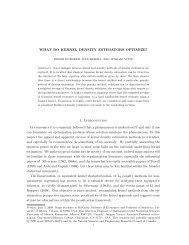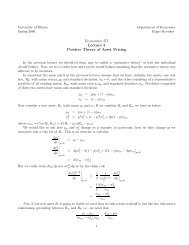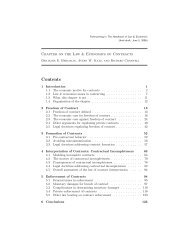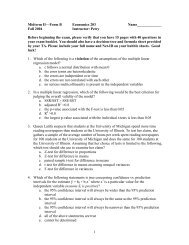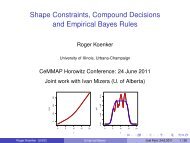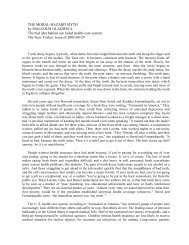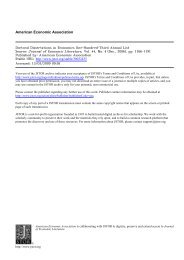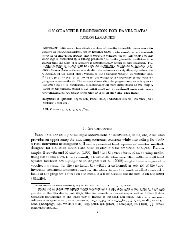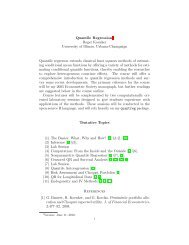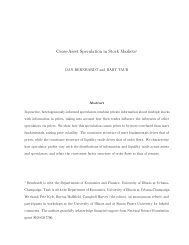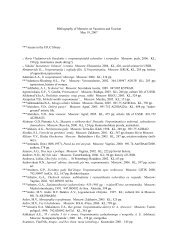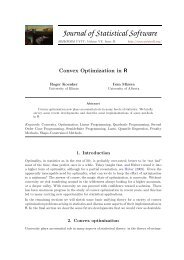1. Introduction - Econometrics at Illinois - University of Illinois at ...
1. Introduction - Econometrics at Illinois - University of Illinois at ...
1. Introduction - Econometrics at Illinois - University of Illinois at ...
You also want an ePaper? Increase the reach of your titles
YUMPU automatically turns print PDFs into web optimized ePapers that Google loves.
Roger Koenker and Zhijie Xiao 7It is well known th<strong>at</strong> v n (t) converges weakly to a Brownian bridge process, v 0 (t), th<strong>at</strong>is a mean-zero Gaussian process with covariance functionEv 0 (t)v 0 (s) =t ^ s , st;and thus the distribution <strong>of</strong> K n and rel<strong>at</strong>ed functionals follows from the observ<strong>at</strong>ion<strong>of</strong> Doob (1949) and its subsequent renements.3.<strong>1.</strong> The Durbin Problem. It is rare in practice, however, th<strong>at</strong> we are willing tospecify F 0 completely. More commonly, ourhypothesis places F in some parametricfamily F with 2 R p .For example, we may wish to test \normality", claimingth<strong>at</strong> Y has distribution F 0 (y) =((y , 0 )= 0 ), but 0 =( 0 ; 0 ) is unknown. Weare thus led to consider, following Durbin (1973), the parametric empirical process,U n (y) = p n(F n (y) , F^ n(y)):Again changing variables, so y ! F ,1 0(t); we may equivalently consideru n (t) = p n(G n (t) , G^ n(t))where G n (t) =F n (F ,1 0(t)) and G^ n(t) =F^ n(F ,1 0(t)) so G 0 (t) =t. Under mildconditions on the sequence f^ n g we have the linear (Bahadur) represent<strong>at</strong>ion,p 1n(^n , 0 )=Zh 0 (s)dv n (s)+o p (1):0So provided the mapping ! G has a Frechet deriv<strong>at</strong>ive, g = g 0 , th<strong>at</strong> is,sup t jG +h (t) , G (t) , h > g(t)j = o(jjhjj) ash ! 0, see van der Vaart (1998, p.278),we maywrite,and thus obtain, with r n (t) =o p (1);(3.1)G^ n(t) =t +(^ n , 0 ) > g(t)+o p (1);^v n (t) = p n(G n (t) , t , (G^ n(t) , t))Z 1= v n (t) , g(t) > h 0 (s)dv n (s)+r n (t);which converges weakly to the Gaussian process,Z 1u 0 (t) =v 0 (t) , g(t) > h 0 (s)dv 0 (s):R The necessity <strong>of</strong> estim<strong>at</strong>ing 0 introduces the drift component g(t) > 1h 00(s)dv 0 (s):Instead <strong>of</strong> the simple Brownian bridge process, v 0 (t), we obtain a more complic<strong>at</strong>edGaussian process with covariance functionEu 0 (t)u 0 (s) =s ^ t , ts , g(t) > H 0 (s) , g(s) > H 0 (t)+g(s) > J 0 g(t)00



